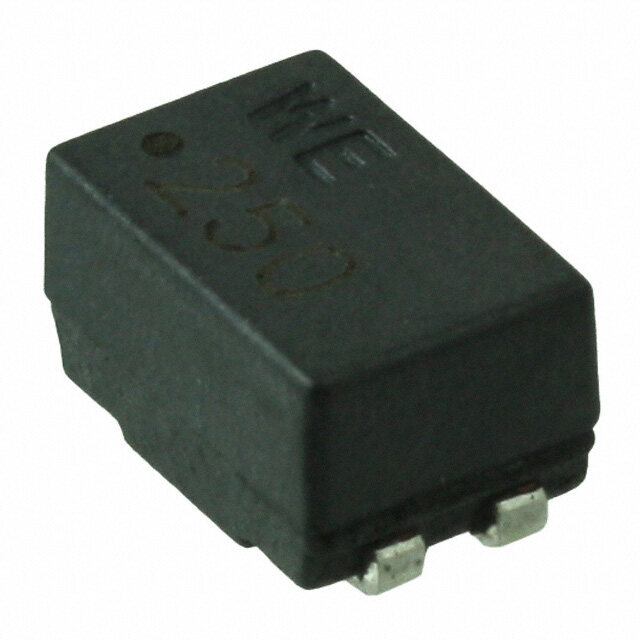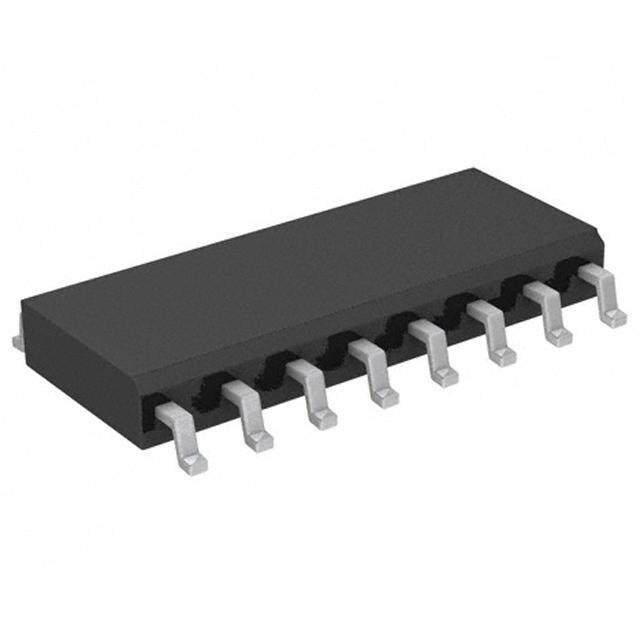ICGOO在线商城 > AT89LS51-16PU
- 型号: AT89LS51-16PU
- 制造商: Atmel
- 库位|库存: xxxx|xxxx
- 要求:
| 数量阶梯 | 香港交货 | 国内含税 |
| +xxxx | $xxxx | ¥xxxx |
查看当月历史价格
查看今年历史价格
AT89LS51-16PU产品简介:
ICGOO电子元器件商城为您提供AT89LS51-16PU由Atmel设计生产,在icgoo商城现货销售,并且可以通过原厂、代理商等渠道进行代购。 提供AT89LS51-16PU价格参考以及AtmelAT89LS51-16PU封装/规格参数等产品信息。 你可以下载AT89LS51-16PU参考资料、Datasheet数据手册功能说明书, 资料中有AT89LS51-16PU详细功能的应用电路图电压和使用方法及教程。
| 参数 | 数值 |
| 产品目录 | 集成电路 (IC) |
| 描述 | IC MCU 8BIT 4KB FLASH 40DIP |
| EEPROM容量 | - |
| 产品分类 | |
| I/O数 | 32 |
| 品牌 | Atmel |
| 数据手册 | |
| 产品图片 |
|
| 产品型号 | AT89LS51-16PU |
| PCN设计/规格 | |
| RAM容量 | 128 x 8 |
| rohs | 无铅 / 符合限制有害物质指令(RoHS)规范要求 |
| 产品系列 | 89LS |
| 产品培训模块 | http://www.digikey.cn/PTM/IndividualPTM.page?site=cn&lang=zhs&ptm=24997http://www.digikey.cn/PTM/IndividualPTM.page?site=cn&lang=zhs&ptm=26162http://www.digikey.cn/PTM/IndividualPTM.page?site=cn&lang=zhs&ptm=26159http://www.digikey.cn/PTM/IndividualPTM.page?site=cn&lang=zhs&ptm=26180 |
| 其它名称 | AT89LS5116PU |
| 包装 | 管件 |
| 外设 | WDT |
| 封装/外壳 | 40-DIP(0.600",15.24mm) |
| 工作温度 | -40°C ~ 85°C |
| 振荡器类型 | 内部 |
| 数据转换器 | - |
| 标准包装 | 10 |
| 核心处理器 | 8051 |
| 核心尺寸 | 8-位 |
| 电压-电源(Vcc/Vdd) | 2.7 V ~ 4 V |
| 程序存储器类型 | 闪存 |
| 程序存储容量 | 4KB(4K x 8) |
| 连接性 | UART/USART |
| 速度 | 16MHz |

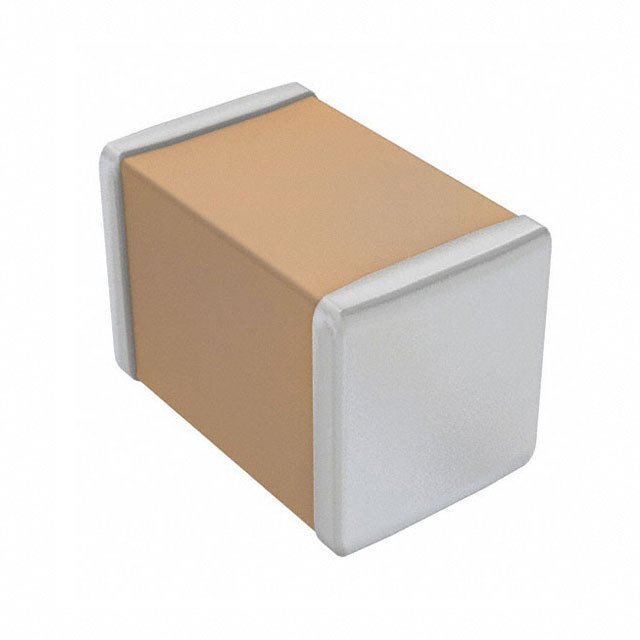

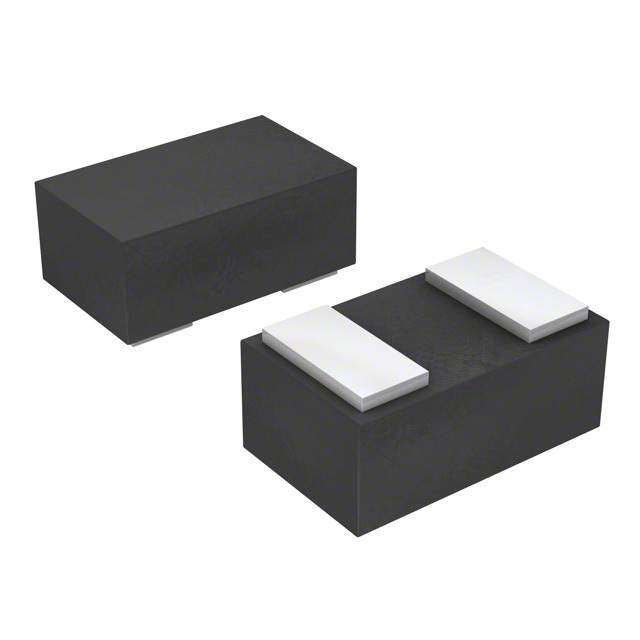
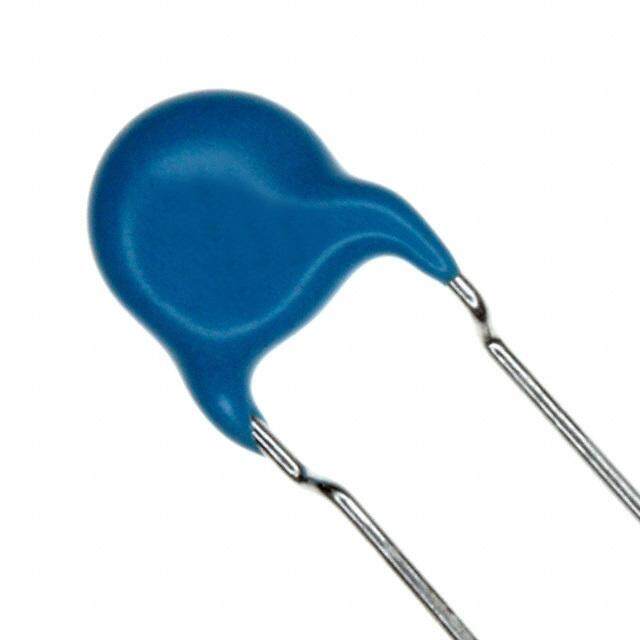
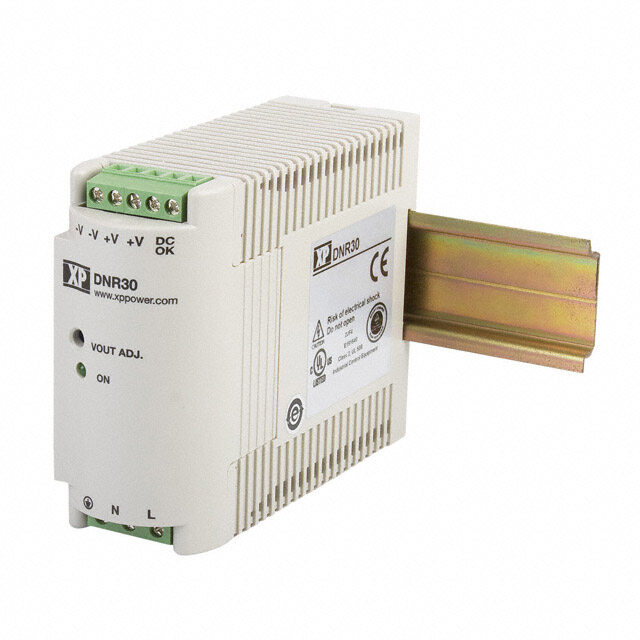

- 商务部:美国ITC正式对集成电路等产品启动337调查
- 曝三星4nm工艺存在良率问题 高通将骁龙8 Gen1或转产台积电
- 太阳诱电将投资9.5亿元在常州建新厂生产MLCC 预计2023年完工
- 英特尔发布欧洲新工厂建设计划 深化IDM 2.0 战略
- 台积电先进制程称霸业界 有大客户加持明年业绩稳了
- 达到5530亿美元!SIA预计今年全球半导体销售额将创下新高
- 英特尔拟将自动驾驶子公司Mobileye上市 估值或超500亿美元
- 三星加码芯片和SET,合并消费电子和移动部门,撤换高东真等 CEO
- 三星电子宣布重大人事变动 还合并消费电子和移动部门
- 海关总署:前11个月进口集成电路产品价值2.52万亿元 增长14.8%

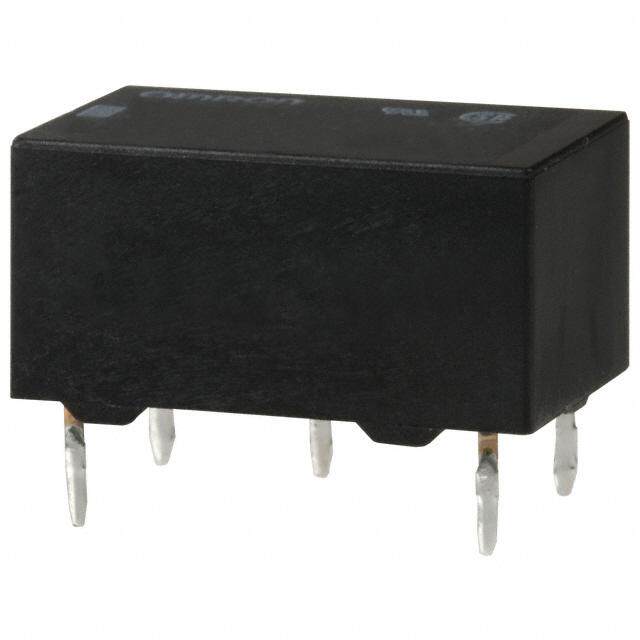
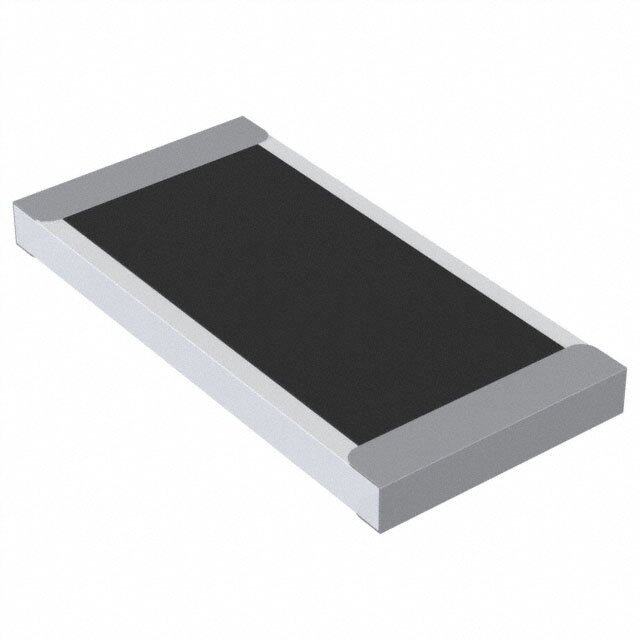
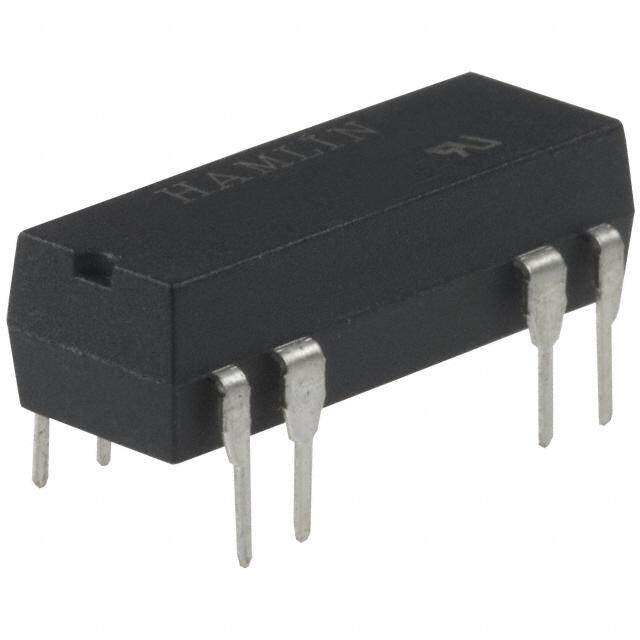
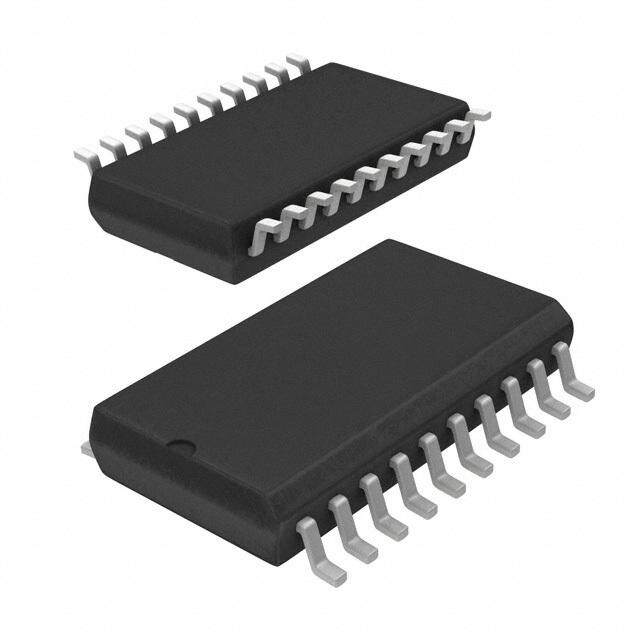


PDF Datasheet 数据手册内容提取
Features • Compatible with MCS®-51 Products (cid:129) 4K Bytes of In-System Programmable (ISP) Flash Memory – Endurance: 10,000 Write/Erase Cycles (cid:129) 2.7V to 4.0V Operating Range (cid:129) Fully Static Operation: 0 Hz to 16 MHz (cid:129) Three-level Program Memory Lock (cid:129) 128 x 8-bit Internal RAM (cid:129) 32 Programmable I/O Lines 8-bit (cid:129) Two 16-bit Timer/Counters (cid:129) Six Interrupt Sources Low-Voltage (cid:129) Full Duplex UART Serial Channel (cid:129) Low-power Idle and Power-down Modes Microcontroller (cid:129) Interrupt Recovery from Power-down Mode (cid:129) Watchdog Timer with 4K Bytes (cid:129) Dual Data Pointer (cid:129) Power-off Flag In-System (cid:129) Flexible ISP Programming (Byte and Page Mode) Programmable (cid:129) Green (Pb/Halide-free) Packaging Option Flash 1. Description The AT89LS51 is a low-voltage, high-performance CMOS 8-bit microcontroller with 4K bytes of in-system programmable Flash memory. The device is manufactured AT89LS51 using Atmel’s high-density nonvolatile memory technology and is compatible with the industry-standard 80C51 instruction set and pinout. The on-chip Flash allows the pro- gram memory to be reprogrammed in-system or by a conventional nonvolatile memory programmer. By combining a versatile 8-bit CPU with in-system programma- ble Flash on a monolithic chip, the Atmel AT89LS51 is a powerful microcontroller which provides a highly-flexible and cost-effective solution to many embedded control applications. The AT89LS51 provides the following standard features: 4K bytes of Flash, 128 bytes of RAM, 32 I/O lines, Watchdog timer, two data pointers, two 16-bit timer/counters, a five-vector two-level interrupt architecture, a full duplex serial port, on-chip oscillator, and clock circuitry. In addition, the AT89LS51 is designed with static logic for opera- tion down to zero frequency and supports two software selectable power saving modes. The Idle Mode stops the CPU while allowing the RAM, timer/counters, serial port, and interrupt system to continue functioning. The Power-down mode saves the RAM contents but freezes the oscillator, disabling all other chip functions until the next external interrupt or hardware reset. 3053C–MICRO–6/08
2. Pin Configurations 2.1 40-lead PDIP 2.3 44-lead PLCC P1.0 1 40 VCC 0)1)2)3) DDDD P1.1 2 39 P0.0 (AD0) AAAA PP11..23 34 3387 PP00..12 ((AADD12)) P1.4 P1.3P1.2P1.1 P1.0 NCVCCP0.0 (P0.1 (P0.2 (P0.3 ( P1.4 5 36 P0.3 (AD3) 65432143210 (MOSI) P1.5 6 35 P0.4 (AD4) (MOSI) P1.5 7 4444439 P0.4 (AD4) (MISO) P1.6 7 34 P0.5 (AD5) (MISO) P1.6 8 38 P0.5 (AD5) (SCK) P1.7 8 33 P0.6 (AD6) (SCK) P1.7 9 37 P0.6 (AD6) RST 9 32 P0.7 (AD7) RST 10 36 P0.7 (AD7) (RXD) P3.0 10 31 EA/VPP (RXD) P3.0 11 35 EA/VPP (TXD) P3.1 11 30 ALE/PROG NC 12 34 NC (INT0) P3.2 12 29 PSEN (TXD) P3.1 13 33 ALE/PROG (INT1) P3.3 13 28 P2.7 (A15) (INT0) P3.2 14 32 PSEN (T0) P3.4 14 27 P2.6 (A14) (INT1) P3.3 15 31 P2.7 (A15) (T1) P3.5 15 26 P2.5 (A13) (T0) P3.4 16 30 P2.6 (A14) (WR) P3.6 16 25 P2.4 (A12) (T1) P3.5 17 29 P2.5 (A13) (RD) P3.7 17 24 P2.3 (A11) 89012345678 11222222222 XTAL2 18 23 P2.2 (A10) XTGANLD1 1290 2221 PP22..10 ((AA98)) R) P3.6D) P3.7XTAL2XTAL1GNDNC8) P2.09) P2.10) P2.21) P2.32) P2.4 (W(R (A(A(A1(A1(A1 2.2 44-lead TQFP D0)D1)D2)D3) AAAA P1.4P1.3P1.2P1.1 P1.0 NCVCCP0.0 (P0.1 (P0.2 (P0.3 ( 4443424140393837363534 (MOSI) P1.5 1 33 P0.4 (AD4) (MISO) P1.6 2 32 P0.5 (AD5) (SCK) P1.7 3 31 P0.6 (AD6) RST 4 30 P0.7 (AD7) (RXD) P3.0 5 29 EA/VPP NC 6 28 NC (TXD) P3.1 7 27 ALE/PROG (INT0) P3.2 8 26 PSEN (INT1) P3.3 9 25 P2.7 (A15) (T0) P3.4 10 24 P2.6 (A14) (T1) P3.5 11 23 P2.5 (A13) 1213141516171819202122 (WR) P3.6(RD) P3.7XTAL2XTAL1GNDGND(A8) P2.0(A9) P2.1(A10) P2.2(A11) P2.3(A12) P2.4 AT89LS51 2 3053C–MICRO–6/08
AT89LS51 3. Block Diagram P0.0 - P0.7 P2.0 - P2.7 V CC PORT 0 DRIVERS PORT 2 DRIVERS GND RAM ADDR. PORT 0 PORT 2 REGISTER RAM LATCH LATCH FLASH PROGRAM B STACK REGISTER ACC POINTER ADDRESS REGISTER BUFFER TMP2 TMP1 PC ALU INCREMENTER INTERRUPT, SERIAL PORT, AND TIMER BLOCKS PROGRAM PSW COUNTER PSEN ALE/PROG TIMING INSTRUCTION AND REGISTER DUAL DPTR EA / V CONTROL PP RST WATCH PORT 3 PORT 1 ISP PROGRAM DOG LATCH LATCH PORT LOGIC OSC PORT 3 DRIVERS PORT 1 DRIVERS P3.0 - P3.7 P1.0 - P1.7 3 3053C–MICRO–6/08
4. Pin Description 4.1 VCC Supply voltage. 4.2 GND Ground. 4.3 Port 0 Port 0 is an 8-bit open drain bidirectional I/O port. As an output port, each pin can sink eight TTL inputs. When 1s are written to port 0 pins, the pins can be used as high-impedance inputs. Port 0 can also be configured to be the multiplexed low-order address/data bus during accesses to external program and data memory. In this mode, P0 has internal pull-ups. Port 0 also receives the code bytes during Flash programming and outputs the code bytes dur- ing program verification. External pull-ups are required during program verification. 4.4 Port 1 Port 1 is an 8-bit bidirectional I/O port with internal pull-ups. The Port 1 output buffers can sink/source four TTL inputs. When 1s are written to Port 1 pins, they are pulled high by the inter- nal pull-ups and can be used as inputs. As inputs, Port 1 pins that are externally being pulled low will source current (I ) because of the internal pull-ups. IL Port 1 also receives the low-order address bytes during Flash programming and verification. Port Pin Alternate Functions P1.5 MOSI (used for In-System Programming) P1.6 MISO (used for In-System Programming) P1.7 SCK (used for In-System Programming) 4.5 Port 2 Port 2 is an 8-bit bidirectional I/O port with internal pull-ups. The Port 2 output buffers can sink/source four TTL inputs. When 1s are written to Port 2 pins, they are pulled high by the inter- nal pull-ups and can be used as inputs. As inputs, Port 2 pins that are externally being pulled low will source current (I ) because of the internal pull-ups. IL Port 2 emits the high-order address byte during fetches from external program memory and dur- ing accesses to external data memory that use 16-bit addresses (MOVX @ DPTR). In this application, Port 2 uses strong internal pull-ups when emitting 1s. During accesses to external data memory that use 8-bit addresses (MOVX @ RI), Port 2 emits the contents of the P2 Special Function Register. Port 2 also receives the high-order address bits and some control signals during Flash program- ming and verification. AT89LS51 4 3053C–MICRO–6/08
AT89LS51 4.6 Port 3 Port 3 is an 8-bit bidirectional I/O port with internal pull-ups. The Port 3 output buffers can sink/source four TTL inputs. When 1s are written to Port 3 pins, they are pulled high by the inter- nal pull-ups and can be used as inputs. As inputs, Port 3 pins that are externally being pulled low will source current (I ) because of the pull-ups. IL Port 3 receives some control signals for Flash programming and verification. Port 3 also serves the functions of various special features of the AT89LS51, as shown in the following table. Port Pin Alternate Functions P3.0 RXD (serial input port) P3.1 TXD (serial output port) P3.2 INT0 (external interrupt 0) P3.3 INT1 (external interrupt 1) P3.4 T0 (timer 0 external input) P3.5 T1 (timer 1 external input) P3.6 WR (external data memory write strobe) P3.7 RD (external data memory read strobe) 4.7 RST Reset input. A high on this pin for two machine cycles while the oscillator is running resets the device. This pin drives High for 98 oscillator periods after the Watchdog times out. The DISRTO bit in SFR AUXR (address 8EH) can be used to disable this feature. In the default state of bit DISRTO, the RESET HIGH out feature is enabled. 4.8 ALE/PROG Address Latch Enable (ALE) is an output pulse for latching the low byte of the address during accesses to external memory. This pin is also the program pulse input (PROG) during Flash programming. In normal operation, ALE is emitted at a constant rate of 1/6 the oscillator frequency and may be used for external timing or clocking purposes. Note, however, that one ALE pulse is skipped dur- ing each access to external data memory. If desired, ALE operation can be disabled by setting bit 0 of SFR location 8EH. With the bit set, ALE is active only during a MOVX or MOVC instruction. Otherwise, the pin is weakly pulled high. Setting the ALE-disable bit has no effect if the microcontroller is in external execution mode. 4.9 PSEN Program Store Enable (PSEN) is the read strobe to external program memory. When the AT89LS51 is executing code from external program memory, PSEN is activated twice each machine cycle, except that two PSEN activations are skipped during each access to exter- nal data memory. 5 3053C–MICRO–6/08
4.10 EA/VPP External Access Enable. EA must be strapped to GND in order to enable the device to fetch code from external program memory locations starting at 0000H up to FFFFH. Note, however, that if lock bit 1 is programmed, EA will be internally latched on reset. EA should be strapped to V for internal program executions. CC This pin also receives the 12-volt programming enable voltage (V ) during Flash programming. PP 4.11 XTAL1 Input to the inverting oscillator amplifier and input to the internal clock operating circuit. 4.12 XTAL2 Output from the inverting oscillator amplifier 5. Special Function Registers A map of the on-chip memory area called the Special Function Register (SFR) space is shown in Table 5-1. Note that not all of the addresses are occupied, and unoccupied addresses may not be imple- mented on the chip. Read accesses to these addresses will in general return random data, and write accesses will have an indeterminate effect. AT89LS51 6 3053C–MICRO–6/08
AT89LS51 Table 5-1. AT89LS51 SFR Map and Reset Values 0F8H 0FFH B 0F0H 0F7H 00000000 0E8H 0EFH ACC 0E0H 0E7H 00000000 0D8H 0DFH PSW 0D0H 0D7H 00000000 0C8H 0CFH 0C0H 0C7H IP 0B8H 0BFH XX000000 P3 0B0H 0B7H 11111111 IE 0A8H 0AFH 0X000000 P2 AUXR1 WDTRST 0A0H 0A7H 11111111 XXXXXXX0 XXXXXXXX SCON SBUF 98H 9FH 00000000 XXXXXXXX P1 90H 97H 11111111 TCON TMOD TL0 TL1 TH0 TH1 AUXR 88H 8FH 00000000 00000000 00000000 00000000 00000000 00000000 XXX00XX0 P0 SP DP0L DP0H DP1L DP1H PCON 80H 87H 11111111 00000111 00000000 00000000 00000000 00000000 0XXX0000 User software should not write 1s to these unlisted locations, since they may be used in future products to invoke new fea- tures. In that case, the reset or inactive values of the new bits will always be 0. Interrupt Registers: The individual interrupt enable bits are in the IE register. Two priorities can be set for each of the five interrupt sources in the IP register. 7 3053C–MICRO–6/08
Table 5-2. AUXR: Auxiliary Register AUXR Address = 8EH Reset Value = XXX00XX0B Not Bit Addressable – – – WDIDLE DISRTO – – DISALE Bit 7 6 5 4 3 2 1 0 – Reserved for future expansion DISALE Disable/Enable ALE DISALE Operating Mode 0 ALE is emitted at a constant rate of 1/6 the oscillator frequency 1 ALE is active only during a MOVX or MOVC instruction DISRTO Disable/Enable Reset out DISRTO 0 Reset pin is driven High after WDT times out 1 Reset pin is input only WDIDLE Disable/Enable WDT in IDLE mode WDIDLE 0 WDT continues to count in IDLE mode 1 WDT halts counting in IDLE mode Dual Data Pointer Registers: To facilitate accessing both internal and external data memory, two banks of 16-bit Data Pointer Registers are provided: DP0 at SFR address locations 82H- 83H and DP1 at 84H-85H. Bit DPS = 0 in SFR AUXR1 selects DP0 and DPS = 1 selects DP1. The user should always initialize the DPS bit to the appropriate value before accessing the respective Data Pointer Register. Power Off Flag: The Power Off Flag (POF) is located at bit 4 (PCON.4) in the PCON SFR. POF is set to “1” during power up. It can be set and rest under software control and is not affected by reset. AT89LS51 8 3053C–MICRO–6/08
AT89LS51 Table 5-3. AUXR1: Auxiliary Register 1 AUXR1 Address = A2H Reset Value = XXXXXXX0B Not Bit Addressable – – – – – – – DPS Bit 7 6 5 4 3 2 1 0 – Reserved for future expansion DPS Data Pointer Register Select DPS 0 Selects DPTR Registers DP0L, DP0H 1 Selects DPTR Registers DP1L, DP1H 6. Memory Organization MCS-51 devices have a separate address space for Program and Data Memory. Up to 64K bytes each of external Program and Data Memory can be addressed. 6.1 Program Memory If the EA pin is connected to GND, all program fetches are directed to external memory. On the AT89LS51, if EA is connected to V , program fetches to addresses 0000H through CC FFFH are directed to internal memory and fetches to addresses 1000H through FFFFH are directed to external memory. 6.2 Data Memory The AT89LS51 implements 128 bytes of on-chip RAM. The 128 bytes are accessible via direct and indirect addressing modes. Stack operations are examples of indirect addressing, so the 128 bytes of data RAM are available as stack space. 7. Watchdog Timer (One-time Enabled with Reset-out) The WDT is intended as a recovery method in situations where the CPU may be subjected to software upsets. The WDT consists of a 14-bit counter and the Watchdog Timer Reset (WDTRST) SFR. The WDT is defaulted to disable from exiting reset. To enable the WDT, a user must write 01EH and 0E1H in sequence to the WDTRST register (SFR location 0A6H). When the WDT is enabled, it will increment every machine cycle while the oscillator is running. The WDT timeout period is dependent on the external clock frequency. There is no way to disable the WDT except through reset (either hardware reset or WDT overflow reset). When WDT over- flows, it will drive an output RESET HIGH pulse at the RST pin. 9 3053C–MICRO–6/08
7.1 Using the WDT To enable the WDT, a user must write 01EH and 0E1H in sequence to the WDTRST register (SFR location 0A6H). When the WDT is enabled, the user needs to service it by writing 01EH and 0E1H to WDTRST to avoid a WDT overflow. The 14-bit counter overflows when it reaches 16383 (3FFFH), and this will reset the device. When the WDT is enabled, it will increment every machine cycle while the oscillator is running. This means the user must reset the WDT at least every 16383 machine cycles. To reset the WDT the user must write 01EH and 0E1H to WDTRST. WDTRST is a write-only register. The WDT counter cannot be read or written. When WDT overflows, it will generate an output RESET pulse at the RST pin. The RESET pulse dura- tion is 98xTOSC, where TOSC=1/FOSC. To make the best use of the WDT, it should be serviced in those sections of code that will periodically be executed within the time required to prevent a WDT reset. 7.2 WDT During Power-down and Idle In Power-down mode the oscillator stops, which means the WDT also stops. While in Power- down mode, the user does not need to service the WDT. There are two methods of exiting Power-down mode: by a hardware reset or via a level-activated external interrupt, which is enabled prior to entering Power-down mode. When Power-down is exited with hardware reset, servicing the WDT should occur as it normally does whenever the AT89LS51 is reset. Exiting Power-down with an interrupt is significantly different. The interrupt is held low long enough for the oscillator to stabilize. When the interrupt is brought high, the interrupt is serviced. To prevent the WDT from resetting the device while the interrupt pin is held low, the WDT is not started until the interrupt is pulled high. It is suggested that the WDT be reset during the interrupt service for the interrupt used to exit Power-down mode. To ensure that the WDT does not overflow within a few states of exiting Power-down, it is best to reset the WDT just before entering Power-down mode. Before going into the IDLE mode, the WDIDLE bit in SFR AUXR is used to determine whether the WDT continues to count if enabled. The WDT keeps counting during IDLE (WDIDLE bit = 0) as the default state. To prevent the WDT from resetting the AT89LS51 while in IDLE mode, the user should always set up a timer that will periodically exit IDLE, service the WDT, and reenter IDLE mode. With WDIDLE bit enabled, the WDT will stop to count in IDLE mode and resumes the count upon exit from IDLE. 8. UART The UART in the AT89LS51 operates the same way as the UART in the AT89C51. For further information on the UART operation, please click on the document link below: http://www.atmel.com/dyn/resources/prod_documents/DOC4316.PDF 9. Timer 0 and 1 Timer 0 and Timer 1 in the AT89LS51 operate the same way as Timer 0 and Timer 1 in the AT89C51. For further information on the timers’ operation, please click on the document link below: http://www.atmel.com/dyn/resources/prod_documents/DOC4316.PDF AT89LS51 10 3053C–MICRO–6/08
AT89LS51 10. Interrupts The AT89LS51 has a total of five interrupt vectors: two external interrupts (INT0 and INT1), two timer interrupts (Timers 0 and 1), and the serial port interrupt. These interrupts are all shown in Figure 10-1. Each of these interrupt sources can be individually enabled or disabled by setting or clearing a bit in Special Function Register IE. IE also contains a global disable bit, EA, which disables all interrupts at once. Note that Table 10-1 shows that bit positions IE.5 and IE.6 are unimplemented. User software should not write 1s to these bit positions, since they may be used in future AT89 products. The Timer 0 and Timer 1 flags, TF0 and TF1, are set at S5P2 of the cycle in which the timers overflow. The values are then polled by the circuitry in the next cycle. . Table 10-1. Interrupt Enable (IE) Register (MSB) (LSB) EA – – ES ET1 EX1 ET0 EX0 Enable Bit = 1 enables the interrupt. Enable Bit = 0 disables the interrupt. Symbol Position Function Disables all interrupts. If EA = 0, no interrupt is acknowledged. If EA = 1, each interrupt source is EA IE.7 individually enabled or disabled by setting or clearing its enable bit. – IE.6 Reserved – IE.5 Reserved ES IE.4 Serial Port interrupt enable bit ET1 IE.3 Timer 1 interrupt enable bit EX1 IE.2 External interrupt 1 enable bit ET0 IE.1 Timer 0 interrupt enable bit EX0 IE.0 External interrupt 0 enable bit User software should never write 1s to reserved bits, because they may be used in future AT89 products. 11 3053C–MICRO–6/08
Figure 10-1. Interrupt Sources 0 INT0 IE0 1 TF0 0 INT1 IE1 1 TF1 TI RI 11. Oscillator Characteristics XTAL1 and XTAL2 are the input and output, respectively, of an inverting amplifier that can be configured for use as an on-chip oscillator, as shown in Figure 11-1. Either a quartz crystal or ceramic resonator may be used. To drive the device from an external clock source, XTAL2 should be left unconnected while XTAL1 is driven, as shown in Figure 11-2. There are no requirements on the duty cycle of the external clock signal, since the input to the internal clock- ing circuitry is hrough a divide-by-two flip-flop, but minimum and maximum voltage high and low time specifications must be observed. Figure 11-1. Oscillator Connections C2 XTAL2 C1 XTAL1 GND Note: C1, C2 = 30 pF ± 10 pF for Crystals = 40 pF ± 10 pF for Ceramic Resonators AT89LS51 12 3053C–MICRO–6/08
AT89LS51 Figure 11-2. External Clock Drive Configuration NC XTAL2 EXTERNAL OSCILLATOR XTAL1 SIGNAL GND 12. Idle Mode In idle mode, the CPU puts itself to sleep while all the on-chip peripherals remain active. The mode is invoked by software. The content of the on-chip RAM and all the special function regis- ters remain unchanged during this mode. The idle mode can be terminated by any enabled interrupt or by a hardware reset. Note that when idle mode is terminated by a hardware reset, the device normally resumes pro- gram execution from where it left off, up to two machine cycles before the internal reset algorithm takes control. On-chip hardware inhibits access to internal RAM in this event, but access to the port pins is not inhibited. To eliminate the possibility of an unexpected write to a port pin when idle mode is terminated by a reset, the instruction following the one that invokes idle mode should not write to a port pin or to external memory. 13. Power-down Mode In the Power-down mode, the oscillator is stopped, and the instruction that invokes Power-down is the last instruction executed. The on-chip RAM and Special Function Registers retain their values until the Power-down mode is terminated. Exit from Power-down mode can be initiated either by a hardware reset or by activation of an enabled external interrupt (INT0 or INT1). Reset redefines the SFRs but does not change the on-chip RAM. The reset should not be activated before V is restored to its normal operating level and must be held active long enough to allow CC the oscillator to restart and stabilize. Table 13-1. Status of External Pins During Idle and Power-down Modes Mode Program Memory ALE PSEN PORT0 PORT1 PORT2 PORT3 Idle Internal 1 1 Data Data Data Data Idle External 1 1 Float Data Address Data Power-down Internal 0 0 Data Data Data Data Power-down External 0 0 Float Data Data Data 13 3053C–MICRO–6/08
14. Program Memory Lock Bits The AT89LS51 has three lock bits that can be left unprogrammed (U) or can be programmed (P) to obtain the additional features listed in Table 14-1. Table 14-1. Lock Bit Protection Modes Program Lock Bits LB1 LB2 LB3 Protection Type 1 U U U No program lock features MOVC instructions executed from external program memory are disabled from fetching code bytes from internal memory, 2 P U U EA is sampled and latched on reset, and further programming of the Flash memory is disabled 3 P P U Same as mode 2, but verify is also disabled 4 P P P Same as mode 3, but external execution is also disabled When lock bit 1 is programmed, the logic level at the EA pin is sampled and latched during reset. If the device is powered up without a reset, the latch initializes to a random value and holds that value until reset is activated. The latched value of EA must agree with the current logic level at that pin in order for the device to function properly. 15. Programming the Flash – Parallel Mode The AT89LS51 is shipped with the on-chip Flash memory array ready to be programmed. The programming interface needs a high-voltage (12-volt) program enable signal and is compatible with conventional third-party Flash or EPROM programmers. The AT89LS51 code memory array is programmed byte-by-byte. Programming Algorithm: Before programming the AT89LS51, the address, data, and control signals should be set up according to the Flash programming mode table (Table 17-1) and Fig- ure 17-1 and Figure 17-2. To program the AT89LS51, take the following steps: 1. Input the desired memory location on the address lines. 2. Input the appropriate data byte on the data lines. 3. Activate the correct combination of control signals. 4. Raise EA/V to 12V. PP 5. Pulse ALE/PROG once to program a byte in the Flash array or the lock bits. The byte- write cycle is self-timed and typically takes no more than 50 µs. Repeat steps 1 through 5, changing the address and data for the entire array or until the end of the object file is reached. Data Polling: The AT89LS51 features Data Polling to indicate the end of a byte write cycle. Dur- ing a write cycle, an attempted read of the last byte written will result in the complement of the written data on P0.7. Once the write cycle has been completed, true data is valid on all outputs, and the next cycle may begin. Data Polling may begin any time after a write cycle has been initiated. Ready/Busy: The progress of byte programming can also be monitored by the RDY/BSY output signal. P3.0 is pulled low after ALE goes high during programming to indicate BUSY. P3.0 is pulled high again when programming is done to indicate READY. AT89LS51 14 3053C–MICRO–6/08
AT89LS51 Program Verify: If lock bits LB1 and LB2 have not been programmed, the programmed code data can be read back via the address and data lines for verification. The status of the individ- ual lock bits can be verified directly by reading them back. Reading the Signature Bytes: The signature bytes are read by the same procedure as a nor- mal verification of locations 000H, 100H, and 200H, except that P3.6 and P3.7 must be pulled to a logic low. The values returned are as follows. (000H) = 1EH indicates manufactured by Atmel (100H) = 61H indicates 89LS51 (200H) = 06H Chip Erase: In the parallel programming mode, a chip erase operation is initiated by using the proper combination of control signals and by pulsing ALE/PROG low for a duration of 200 ns - 500 ns. In the serial programming mode, a chip erase operation is initiated by issuing the Chip Erase instruction. In this mode, chip erase is self-timed and takes about 500 ms. During chip erase, a serial read from any address location will return 00H at the data output. 16. Programming the Flash – Serial Mode The Code memory array can be programmed using the serial ISP interface while RST is pulled to V . The serial interface consists of pins SCK, MOSI (input) and MISO (output). After RST is CC set high, the Programming Enable instruction needs to be executed first before other operations can be executed. Before a reprogramming sequence can occur, a Chip Erase operation is required. The Chip Erase operation turns the content of every memory location in the Code array into FFH. Either an external system clock can be supplied at pin XTAL1 or a crystal needs to be connected across pins XTAL1 and XTAL2. The maximum serial clock (SCK) frequency should be less than 1/16 of the crystal frequency. With a 16 MHz oscillator clock, the maximum SCK frequency is 1 MHz. 16.1 Serial Programming Algorithm To program and verify the AT89LS51 in the serial programming mode, the following sequence is recommended: 1. Power-up sequence: a. Apply power between VCC and GND pins. b. Set RST pin to “H”. If a crystal is not connected across pins XTAL1 and XTAL2, apply a 3 MHz to 16 MHz clock to XTAL1 pin and wait for at least 10 milliseconds. 2. Enable serial programming by sending the Programming Enable serial instruction to pin MOSI/P1.5. The frequency of the shift clock supplied at pin SCK/P1.7 needs to be less than the CPU clock at XTAL1 divided by 16. 3. The Code array is programmed one byte at a time in either the Byte or Page mode. The write cycle is self-timed and typically takes less than 1 ms at 2.7V. 4. Any memory location can be verified by using the Read instruction that returns the con- tent at the selected address at serial output MISO/P1.6. 15 3053C–MICRO–6/08
5. At the end of a programming session, RST can be set low to commence normal device operation. Power-off sequence (if needed): 1. Set XTAL1 to “L” (if a crystal is not used). 2. Set RST to “L”. 3. Turn V power off. CC Data Polling: The Data Polling feature is also available in the serial mode. In this mode, during a write cycle an attempted read of the last byte written will result in the complement of the MSB of the serial output byte on MISO. 16.2 Serial Programming Instruction Set The Instruction Set for Serial Programming follows a 4-byte protocol and is shown in Table 19-1. 17. Programming Interface – Parallel Mode Every code byte in the Flash array can be programmed by using the appropriate combination of control signals. The write operation cycle is self-timed and once initiated, will automatically time itself to completion. Most major worldwide programming vendors offer support for the Atmel microcontroller series. Please contact your local programming vendor for the appropriate software revision. Table 17-1. Flash Programming Modes P2.3-0 P1.7-0 ALE/ EA/ P0.7-0 Mode V RST PSEN PROG V P2.6 P2.7 P3.3 P3.6 P3.7 Data Address CC PP (2) Write Code Data 5V H L 12V L H H H H D A11-8 A7-0 IN Read Code Data 5V H L H H L L L H H D A11-8 A7-0 OUT (3) Write Lock Bit 1 5V H L 12V H H H H H X X X (3) Write Lock Bit 2 5V H L 12V H H H L L X X X (3) Write Lock Bit 3 5V H L 12V H L H H L X X X P0.2, Read Lock Bits 5V H L H H H H L H L P0.3, X X 1, 2, 3 P0.4 (1) Chip Erase 5V H L 12V H L H L L X X X Read Atmel ID 5V H L H H L L L L L 1EH 0000 00H Read Device ID 5V H L H H L L L L L 61H 0001 00H Read Device ID 5V H L H H L L L L L 06H 0010 00H Notes: 1. Each PROG pulse is 200 ns - 500 ns for Chip Erase. 2. Each PROG pulse is 200 ns - 500 ns for Write Code Data. 3. Each PROG pulse is 200 ns - 500 ns for Write Lock Bits. 4. RDY/BSY signal is output on P3.0 during programming. 5. X = don’t care. AT89LS51 16 3053C–MICRO–6/08
AT89LS51 Figure 17-1. Programming the Flash Memory (Parallel Mode) 4.5V - 5.5V AT89S51 ADDR. A0-A7 P1.0-P1.7 VCC 0000H/FFFH PGM P2.0 - P2.3 P0 A8-A11 DATA P2.6 SEE FLASH P2.7 ALE PROG PROGRAMMING P3.3 MODES TABLE P3.6 P3.7 XTAL2 EA V /V IH PP 3 - 16 MHz RDY/ P3.0 BSY XTAL1 RST V IH GND PSEN Figure 17-2. Verifying the Flash Memory (Parallel Mode) 4.5V - 5.5V AT89S51 ADDR. A0-A7 P1.0-P1.7 VCC 0000H/FFFH PGM DATA A8-A11 P2.0 - P2.3 P0 (USE 10K PULLUPS) P2.6 SEE FLASH P2.7 ALE PROGRAMMING P3.3 MODES TABLE P3.6 V P3.7 IH XTAL2 EA 3 - 16 MHz XTAL1 RST VIH GND PSEN 17 3053C–MICRO–6/08
18. Flash Programming and Verification Characteristics (Parallel Mode) T = 20°C to 30°C, V = 4.5 to 5.5V A CC Symbol Parameter Min Max Units V Programming Supply Voltage 11.5 12.5 V PP I Programming Supply Current 10 mA PP I V Supply Current 30 mA CC CC 1/t Oscillator Frequency 3 16 MHz CLCL t Address Setup to PROG Low 48 t AVGL CLCL t Address Hold After PROG 48 t GHAX CLCL t Data Setup to PROG Low 48 t DVGL CLCL t Data Hold After PROG 48 t GHDX CLCL t P2.7 (ENABLE) High to V 48 t EHSH PP CLCL t V Setup to PROG Low 10 µs SHGL PP t V Hold After PROG 10 µs GHSL PP t PROG Width 0.2 1 µs GLGH t Address to Data Valid 48 t AVQV CLCL t ENABLE Low to Data Valid 48 t ELQV CLCL t Data Float After ENABLE 0 48 t EHQZ CLCL t PROG High to BUSY Low 1.0 µs GHBL t Byte Write Cycle Time 50 µs WC Figure 18-1. Flash Programming and Verification Waveforms – Parallel Mode PROGRAMMING VERIFICATION P1.0 - P1.7 ADDRESS ADDRESS P2.0 - P2.3 t AVQV PORT 0 DATA IN DATA OUT t t DVGL GHDX t t AVGL GHAX ALE/PROG t t SHGL t GHSL GLGH VPP LOGIC 1 EA/VPP LOGIC 0 t t EHSH t EHQZ P2.7 ELQV (ENABLE) t GHBL P3.0 (RDY/BSY) BUSY READY t WC AT89LS51 18 3053C–MICRO–6/08
AT89LS51 Figure 18-2. Flash Memory Serial Downloading V CC AT89LS51 V CC INSTRUCTION P1.5/MOSI INPUT DATA OUTPUT P1.6/MISO CLOCK IN P1.7/SCK XTAL2 3 - 16 MHz XTAL1 RST V IH GND 19. Flash Programming and Verification Waveforms – Serial Mode Figure 19-1. Serial Programming Waveforms 7 6 5 4 3 2 1 0 19 3053C–MICRO–6/08
Table 19-1. Serial Programming Instruction Set Instruction Format Instruction Byte 1 Byte 2 Byte 3 Byte 4 Operation xxxx xxxx Enable Serial Programming Programming Enable 1010 1100 0101 0011 xxxx xxxx 0110 1001 while RST is high (Output on MISO) Chip Erase Flash memory Chip Erase 1010 1100 100x xxxx xxxx xxxx xxxx xxxx array R(Beyated MProodgera)m Memory 0010 0000 xxxx A11A10A9A8 A7A6A5A4A3A2A1A0 D7D6D5D4 D3D2D1D0 Rmeeamdo drya tian ftrhoem b Pytreo gmraomde W(Bryittee MProodgera)m Memory 0100 0000 xxxx A11A10A9A8 A7A6A5A4A3A2A1A0 D7D6D5D4 D3D2D1D0 Wmerimteo drya tian ttoh eP rboygtera mmo de Write Lock Bits(1) 1010 1100 1110 0012 xxxx xxxx xxxx xxxx Write Lock bits (see Note 1) BB Read back current status of 3 21 Read Lock Bits 0010 0100 xxxx xxxx xxxx xxxx xxx LB LB LB xx the lock bits (a programmed lock bit reads back as a “1”) Read Signature Bytes 0010 1000 xxxx 11109 8 A7 xxx xxx0 Signature Byte Read Signature Byte AAAA Read data from Program Read Program Memory xxxx 1098 Byte 1... 0011 0000 11AA Byte 0 memory in the Page Mode (Page Mode) AA Byte 255 (256 bytes) Write data to Program Write Program Memory Byte 1... 0101 0000 xxxx 1098 Byte 0 memory in the Page Mode (Page Mode) 11AA Byte 255 AA (256 bytes) Note: 1. B1 = 0, B2 = 0 → Mode 1, no lock protection } B1 = 0, B2 = 1 → Mode 2, lock bit 1 activated Each of the lock bit modes needs to be activated sequentially B1 = 1, B2 = 0 → Mode 3, lock bit 2 activated before Mode 4 can be executed. → B1 = 1, B1 = 1 Mode 4, lock bit 3 activated After Reset signal is high, SCK should be low for at least 64 system clocks before it goes high to clock in the enable data bytes. No pulsing of Reset signal is necessary. SCK should be no faster than 1/16 of the system clock at XTAL1. For Page Read/Write, the data always starts from byte 0 to 255. After the command byte and upper address byte are latched, each byte thereafter is treated as data until all 256 bytes are shifted in/out. Then the next instruction will be ready to be decoded. AT89LS51 20 3053C–MICRO–6/08
AT89LS51 20. Serial Programming Characteristics Figure 20-1. Serial Programming Timing MOSI t t t OVSH SHOX SLSH SCK t SHSL MISO t SLIV Table 20-1. Serial Programming Characteristics, T = -40⋅ C to 85⋅ C, V = 2.7V - 4.0V (Unless Otherwise Noted) A CC Symbol Parameter Min Typ Max Units 1/t Oscillator Frequency 3 16 MHz CLCL t Oscillator Period 62.5 ns CLCL t SCK Pulse Width High 8 t ns SHSL CLCL t SCK Pulse Width Low 8 t ns SLSH CLCL t MOSI Setup to SCK High t ns OVSH CLCL t MOSI Hold after SCK High 2 t ns SHOX CLCL t SCK Low to MISO Valid 10 16 32 ns SLIV t Chip Erase Instruction Cycle Time 500 ms ERASE t Serial Byte Write Cycle Time 64 t + 400 µs SWC CLCL 21. Absolute Maximum Ratings* Operating Temperature..................................-55°C to +125°C *NOTICE: Stresses beyond those listed under “Absolute Maximum Ratings” may cause permanent dam- Storage Temperature.....................................-65°C to +150°C age to the device. This is a stress rating only and functional operation of the device at these or any Voltage on Any Pin other conditions beyond those indicated in the with Respect to Ground.....................................-1.0V to +7.0V operational sections of this specification is not implied. Exposure to absolute maximum rating Maximum Operating Voltage............................................6.6V conditions for extended periods may affect device reliability. DC Output Current......................................................15.0 mA 21 3053C–MICRO–6/08
22. DC Characteristics The values shown in this table are valid for T = -40°C to 85°C and V = 2.7V to 4.0V, unless otherwise noted. A CC Symbol Parameter Condition Min Max Units V Input Low Voltage (Except EA) -0.5 0.7 V IL V Input Low Voltage (EA) -0.5 0.2 V -0.3 V IL1 CC V Input High Voltage (Except XTAL1, RST) 0.2 V +0.9 V +0.5 V IH CC CC V Input High Voltage (XTAL1, RST) 0.7 V V +0.5 V IH1 CC CC Output Low Voltage(1) (Ports V I = 0.8 mA 0.45 V OL 1,2,3) OL Output Low Voltage(1) V I = 1.6 mA 0.45 V OL1 (Port 0, ALE, PSEN) OL I = -60 µA 2.4 V OH Output High Voltage V I = -25 µA 0.65 V V OH (Ports 1,2,3, ALE, PSEN) OH CC I = -10 µA 0.80 V V OH CC I = -800 µA 2.4 V OH Output High Voltage V I = -300 µA 0.75 V V OH1 (Port 0 in External Bus Mode) OH CC I = -80 µA 0.9 V V OH CC Logical 0 Input Current (Ports I V = 0.45V -50 µA IL 1,2,3) IN Logical 1 to 0 Transition Current I V = 2V -150 µA TL (Ports 1,2,3) IN Input Leakage Current (Port 0, I 0.45 < V < V ±10 µA LI EA) IN CC RRST Reset Pulldown Resistor 50 300 KΩ C Pin Capacitance Test Freq. = 1 MHz, T = 25°C 10 pF IO A Active Mode, 12 MHz 25 mA Power Supply Current I Idle Mode, 12 MHz 6.5 mA CC Power-down Mode(2) V = 4.0V 30 µA CC Notes: 1. Under steady state (non-transient) conditions, I must be externally limited as follows: OL Maximum I per port pin: 10 mA OL Maximum I per 8-bit port: OL Port 0: 26 mA Ports 1, 2, 3: 15 mA Maximum total I for all output pins: 71 mA OL If I exceeds the test condition, V may exceed the related specification. Pins are not guaranteed to sink current greater OL OL than the listed test conditions. 2. Minimum V for Power-down is 2V. CC AT89LS51 22 3053C–MICRO–6/08
AT89LS51 23. AC Characteristics Under operating conditions, load capacitance for Port 0, ALE/PROG, and PSEN = 100 pF; load capacitance for all other outputs = 80 pF. 23.1 External Program and Data Memory Characteristics 16 MHz Oscillator Variable Oscillator Symbol Parameter Min Max Min Max Units 1/t Oscillator Frequency 0 16 MHz CLCL t ALE Pulse Width 85 2t -40 ns LHLL CLCL t Address Valid to ALE Low 22 t -40 ns AVLL CLCL t Address Hold After ALE Low 32 t -30 ns LLAX CLCL t ALE Low to Valid Instruction In 150 4t -100 ns LLIV CLCL t ALE Low to PSEN Low 32 t -30 ns LLPL CLCL t PSEN Pulse Width 142 3t -45 ns PLPH CLCL t PSEN Low to Valid Instruction In 82 3t -105 ns PLIV CLCL t Input Instruction Hold After PSEN 0 0 ns PXIX t Input Instruction Float After PSEN 37 t -25 ns PXIZ CLCL t PSEN to Address Valid 75 t -8 ns PXAV CLCL t Address to Valid Instruction In 207 5t -105 ns AVIV CLCL t PSEN Low to Address Float 10 10 ns PLAZ t RD Pulse Width 275 6t -100 ns RLRH CLCL t WR Pulse Width 275 6t -100 ns WLWH CLCL t RD Low to Valid Data In 147 5t -165 ns RLDV CLCL t Data Hold After RD 0 0 ns RHDX t Data Float After RD 65 2t -60 ns RHDZ CLCL t ALE Low to Valid Data In 350 8t -150 ns LLDV CLCL t Address to Valid Data In 397 9t -165 ns AVDV CLCL t ALE Low to RD or WR Low 137 239 3t -50 3t +50 ns LLWL CLCL CLCL t Address to RD or WR Low 122 4t -130 ns AVWL CLCL t Data Valid to WR Transition 13 t -50 ns QVWX CLCL t Data Valid to WR High 287 7t -150 ns QVWH CLCL t Data Hold After WR 13 t -50 ns WHQX CLCL t RD Low to Address Float 0 0 ns RLAZ t RD or WR High to ALE High 23 103 t -40 t +40 ns WHLH CLCL CLCL 23 3053C–MICRO–6/08
24. External Program Memory Read Cycle t LHLL ALE t PLPH t t AVLL t LLIV LLPL PSEN tPLIV t t PXAV PLAZ t t PXIZ LLAX t PXIX PORT0 A0-A7 INSTRIN A0-A7 t AVIV PORT2 A8-A15 A8-A15 25. External Data Memory Read Cycle t LHLL ALE t WHLH PSEN t LLDV t RLRH t LLWL RD t LLAX t t t RLDV RHDZ AVLL t RLAZ t RHDX PORT 0 A0 - A7 FROM RI OR DPL DATA IN A0 - A7 FROM PCL INSTR IN t AVWL t AVDV PORT 2 P2.0 - P2.7 OR A8 - A15 FROM DPH A8 - A15 FROM PCH AT89LS51 24 3053C–MICRO–6/08
AT89LS51 26. External Data Memory Write Cycle t LHLL ALE t WHLH PSEN t t LLWL WLWH WR t LLAX t t t AVLL QVWX WHQX t QVWH PORT 0 A0 - A7 FROM RI OR DPL DATA OUT A0 - A7 FROM PCL INSTR IN t AVWL PORT 2 P2.0 - P2.7 OR A8 - A15 FROM DPH A8 - A15 FROM PCH 27. External Clock Drive Waveforms t CHCX tCHCX tCLCH tCHCL V - 0.5V CC 0.7 V CC 0.2 V - 0.1V CC 0.45V t CLCX t CLCL 28. External Clock Drive Symbol Parameter Min Max Units 1/t Oscillator Frequency 0 16 MHz CLCL t Clock Period 62.5 ns CLCL t High Time 20 ns CHCX t Low Time 20 ns CLCX t Rise Time 20 ns CLCH t Fall Time 20 ns CHCL 25 3053C–MICRO–6/08
29. Serial Port Timing: Shift Register Mode Test Conditions The values in this table are valid for V = 2.7V to 4.0V and Load Capacitance = 80 pF. CC 12 MHz Osc Variable Oscillator Symbol Parameter Min Max Min Max Units t Serial Port Clock Cycle Time 1.0 12t μs XLXL CLCL t Output Data Setup to Clock Rising Edge 700 10t -133 ns QVXH CLCL t Output Data Hold After Clock Rising Edge 50 2t -80 ns XHQX CLCL t Input Data Hold After Clock Rising Edge 0 0 ns XHDX t Clock Rising Edge to Input Data Valid 700 10t -133 ns XHDV CLCL 30. Shift Register Mode Timing Waveforms INSTRUCTION 0 1 2 3 4 5 6 7 8 ALE t XLXL CLOCK t QVXH t XHQX WRITETOSBUF 0 1 2 3 4 5 6 7 t OUTPUTDATA tXHDV XHDX SETTI CLEARRI VALID VALID VALID VALID VALID VALID VALID VALID INPUTDATA SETRI 31. AC Testing Input/Output Waveforms(1) V - 0.5V CC 0.2 V + 0.9V CC TEST POINTS 0.2 V - 0.1V 0.45V CC Note: 1. AC Inputs during testing are driven at V - 0.5V for a logic 1 and 0.45V for a logic 0. Timing measurements are made at V CC IH min. for a logic 1 and V max. for a logic 0. IL 32. Float Waveforms(1) V + 0.1V V - 0.1V LOAD OL V Timing Reference LOAD Points V - 0.1V V + 0.1V LOAD OL Note: 1. For timing purposes, a port pin is no longer floating when a 100 mV change from load voltage occurs. A port pin begins to float when a 100 mV change from the loaded V /V level occurs. OH OL AT89LS51 26 3053C–MICRO–6/08
AT89LS51 33. Ordering Information 33.1 Green Package Option (Pb/Halide-free) Speed Power (MHz) Supply Ordering Code Package Operation Range AT89LS51-16AU 44A Industrial 16 2.7V to 4.0V AT89LS51-16JU 44J (-40°C to 85°C) AT89LS51-16PU 40P6 Package Type 44A 44-lead, Thin Plastic Gull Wing Quad Flatpack (TQFP) 44J 44-lead, Plastic J-leaded Chip Carrier (PLCC) 40P6 40-pin, 0.600" Wide, Plastic Dual Inline Package (PDIP) 27 3053C–MICRO–6/08
34. Packaging Information 34.1 44A – TQFP PIN 1 B PIN 1 IDENTIFIER e E1 E D1 D C 0˚~7˚ A1 A2 A L COMMON DIMENSIONS (Unit of Measure = mm) SYMBOL MIN NOM MAX NOTE A – – 1.20 A1 0.05 – 0.15 A2 0.95 1.00 1.05 D 11.75 12.00 12.25 D1 9.90 10.00 10.10 Note 2 E 11.75 12.00 12.25 Notes: 1.This package conforms to JEDEC reference MS-026, Variation ACB. E1 9.90 10.00 10.10 Note 2 2.Dimensions D1 and E1 do not include mold protrusion. Allowable protrusion is 0.25 mm per side. Dimensions D1 and E1 are maximum B 0.30 – 0.45 plastic body size dimensions including mold mismatch. C 0.09 – 0.20 3. Lead coplanarity is 0.10 mm maximum. L 0.45 – 0.75 e 0.80 TYP 10/5/2001 TITLE DRAWING NO. REV. 2325 Orchard Parkway 44A, 44-lead, 10 x 10 mm Body Size, 1.0 mm Body Thickness, San Jose, CA 95131 44A B R 0.8 mm Lead Pitch, Thin Profile Plastic Quad Flat Package (TQFP) AT89LS51 28 3053C–MICRO–6/08
AT89LS51 34.2 44J – PLCC 1.14(0.045) X 45˚ 1.14(0.045) X 45˚ PIN NO. 1 0.318(0.0125) IDENTIFIER 0.191(0.0075) E1 E B1 D2/E2 B e A2 D1 A1 D A 0.51(0.020)MAX 45˚ MAX (3X) COMMON DIMENSIONS (Unit of Measure = mm) SYMBOL MIN NOM MAX NOTE A 4.191 – 4.572 A1 2.286 – 3.048 A2 0.508 – – D 17.399 – 17.653 D1 16.510 – 16.662 Note 2 E 17.399 – 17.653 Notes: 1.This package conforms to JEDEC reference MS-018, Variation AC. E1 16.510 – 16.662 Note 2 2.Dimensions D1 and E1 do not include mold protrusion. Allowable protrusion is .010"(0.254 mm) per side. Dimension D1 D2/E2 14.986 – 16.002 and E1 include mold mismatch and are measured at the extreme B 0.660 – 0.813 material condition at the upper or lower parting line. 3. Lead coplanarity is 0.004" (0.102 mm) maximum. B1 0.330 – 0.533 e 1.270 TYP 10/04/01 TITLE DRAWING NO. REV. 2325 Orchard Parkway 44J, 44-lead, Plastic J-leaded Chip Carrier (PLCC) San Jose, CA 95131 44J B R 29 3053C–MICRO–6/08
34.3 40P6 – PDIP D PIN 1 E1 A SEATING PLANE A1 L B B1 e E COMMON DIMENSIONS 0º ~ 15º REF (Unit of Measure = mm) C SYMBOL MIN NOM MAX NOTE eB A – – 4.826 A1 0.381 – – D 52.070 – 52.578 Note 2 E 15.240 – 15.875 E1 13.462 – 13.970 Note 2 B 0.356 – 0.559 B1 1.041 – 1.651 Notes: 1.This package conforms to JEDEC reference MS-011, Variation AC. 2.Dimensions D and E1 do not include mold Flash or Protrusion. L 3.048 – 3.556 Mold Flash or Protrusion shall not exceed 0.25 mm (0.010"). C 0.203 – 0.381 eB 15.494 – 17.526 e 2.540 TYP 09/28/01 TITLE DRAWING NO. REV. 2325 Orchard Parkway 40P6, 40-lead (0.600"/15.24 mm Wide) Plastic Dual R San Jose, CA 95131 Inline Package (PDIP) 40P6 B AT89LS51 30 3053C–MICRO–6/08
Headquarters International Atmel Corporation Atmel Asia Atmel Europe Atmel Japan 2325 Orchard Parkway Room 1219 Le Krebs 9F, Tonetsu Shinkawa Bldg. San Jose, CA 95131 Chinachem Golden Plaza 8, Rue Jean-Pierre Timbaud 1-24-8 Shinkawa USA 77 Mody Road Tsimshatsui BP 309 Chuo-ku, Tokyo 104-0033 Tel: 1(408) 441-0311 East Kowloon 78054 Saint-Quentin-en- Japan Fax: 1(408) 487-2600 Hong Kong Yvelines Cedex Tel: (81) 3-3523-3551 Tel: (852) 2721-9778 France Fax: (81) 3-3523-7581 Fax: (852) 2722-1369 Tel: (33) 1-30-60-70-00 Fax: (33) 1-30-60-71-11 Product Contact Web Site Technical Support Sales Contact www.atmel.com mcu@atmel.com www.atmel.com/contacts Literature Requests www.atmel.com/literature Disclaimer: The information in this document is provided in connection with Atmel products. No license, express or implied, by estoppel or otherwise, to any intellectual property right is granted by this document or in connection with the sale of Atmel products. EXCEPT AS SET FORTH IN ATMEL’S TERMS AND CONDI- TIONS OF SALE LOCATED ON ATMEL’S WEB SITE, ATMEL ASSUMES NO LIABILITY WHATSOEVER AND DISCLAIMS ANY EXPRESS, IMPLIED OR STATUTORY WARRANTY RELATING TO ITS PRODUCTS INCLUDING, BUT NOT LIMITED TO, THE IMPLIED WARRANTY OF MERCHANTABILITY, FITNESS FOR A PARTICULAR PURPOSE, OR NON-INFRINGEMENT. IN NO EVENT SHALL ATMEL BE LIABLE FOR ANY DIRECT, INDIRECT, CONSEQUENTIAL, PUNITIVE, SPECIAL OR INCIDEN- TAL DAMAGES (INCLUDING, WITHOUT LIMITATION, DAMAGES FOR LOSS OF PROFITS, BUSINESS INTERRUPTION, OR LOSS OF INFORMATION) ARISING OUT OF THE USE OR INABILITY TO USE THIS DOCUMENT, EVEN IF ATMEL HAS BEEN ADVISED OF THE POSSIBILITY OF SUCH DAMAGES. Atmel makes no representations or warranties with respect to the accuracy or completeness of the contents of this document and reserves the right to make changes to specifications and product descriptions at any time without notice. Atmel does not make any commitment to update the information contained herein. Unless specifically provided otherwise, Atmel products are not suitable for, and shall not be used in, automotive applications. Atmel’s products are not intended, authorized, or warranted for use as components in applications intended to support or sustain life. © 2008 Atmel Corporation. All rights reserved. Atmel®, logo and combinations thereof, and others are registered trademarks or trademarks of Atmel Corporation or its subsidiaries. Other terms and product names may be trademarks of others. 3053C–MICRO–6/08
Mouser Electronics Authorized Distributor Click to View Pricing, Inventory, Delivery & Lifecycle Information: M icrochip: AT89LS51-16AU AT89LS51-16JU AT89LS51-16PU
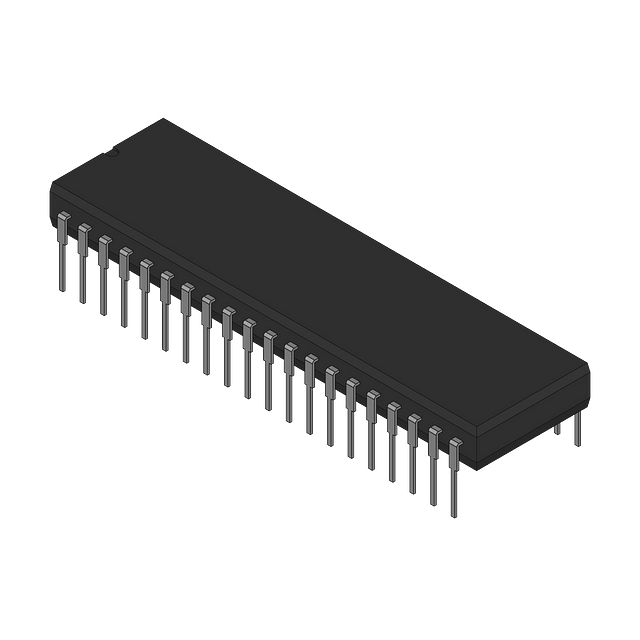
 Datasheet下载
Datasheet下载


